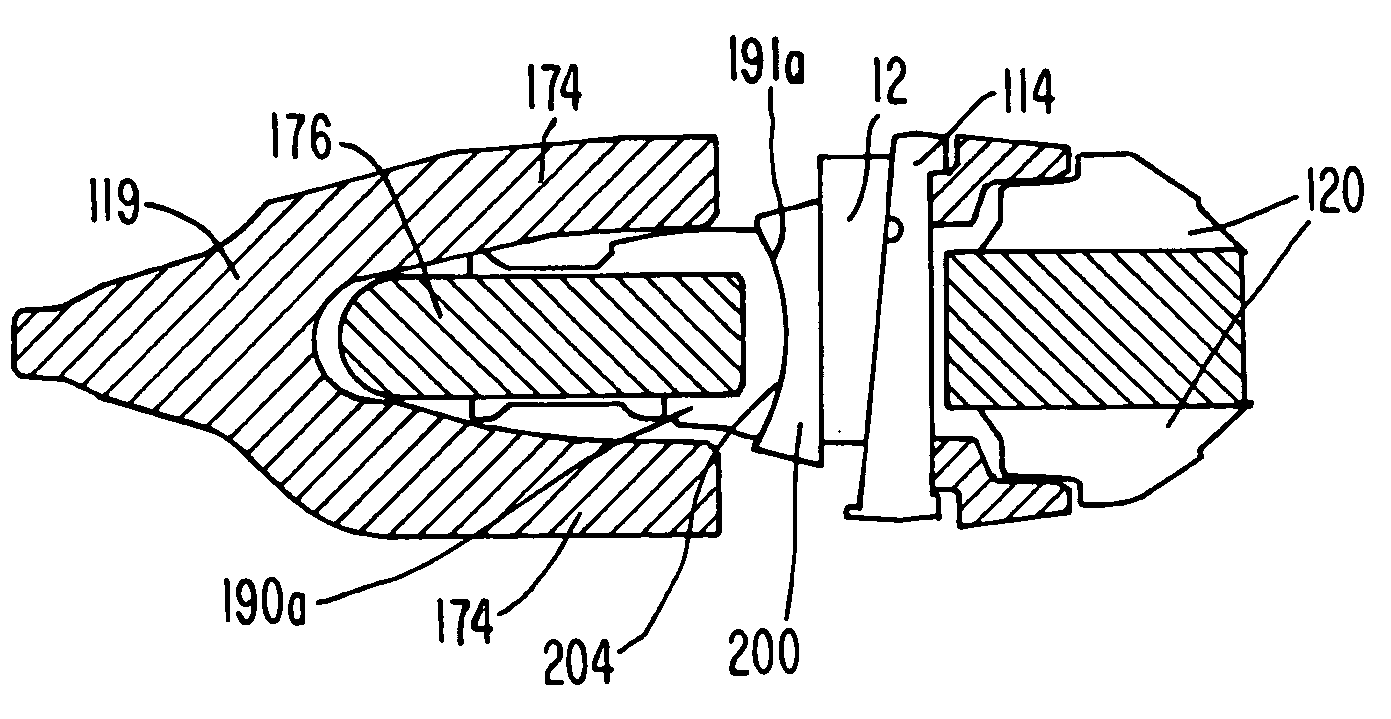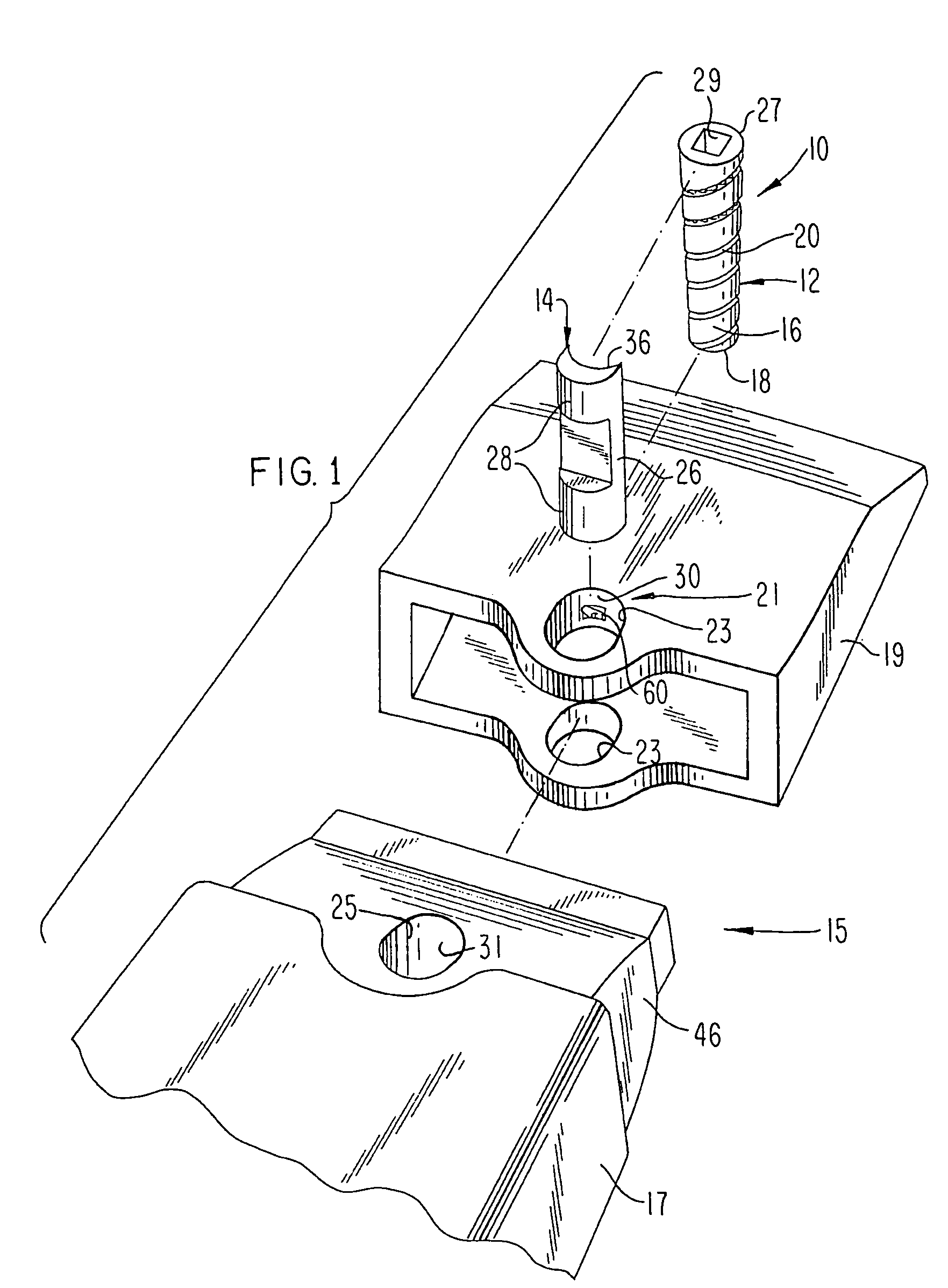Releasable coupling assembly
a technology of coupling assembly and bolt, which is applied in the direction of rod connection, fastening means, constructions, etc., can solve the problems of imposing a risk of harm to the operator, unable to provide substantial tightening of the point onto the adapter, and exacerbate the difficulty and risk attendant, so as to achieve effective tightening of the wear member onto the support structure, the effect of reducing the risk and being convenient to us
- Summary
- Abstract
- Description
- Claims
- Application Information
AI Technical Summary
Benefits of technology
Problems solved by technology
Method used
Image
Examples
Embodiment Construction
[0045]The present invention pertains to a coupling assembly for releasably holding separable parts together. While the invention has a broader application, it is particularly useful in releasably securing a wear member to a support structure in an excavating operation. The wear member may, for example, be a point, an adapter, a shroud or other replaceable component.
[0046]In one preferred construction, the lock 10 includes a wedge 12 and a spool 14 (FIGS. 2–5). Although the lock can be used to secure a wide range of components together, it is shown in FIG. 1 holding together the parts of an excavator tooth. In this embodiment of the invention, the lock is placed in a wear assembly 15 wherein the support structure is formed as an adapter 17 and the wear member is defined as a point or tip 19. Lock 10 is received into an opening 21 in wear assembly 15 that is cooperatively defined by holes 23 in point 19 and hole 25 in adapter 17 so as to releasably hold the point to the adapter (FIGS....
PUM
 Login to View More
Login to View More Abstract
Description
Claims
Application Information
 Login to View More
Login to View More - R&D
- Intellectual Property
- Life Sciences
- Materials
- Tech Scout
- Unparalleled Data Quality
- Higher Quality Content
- 60% Fewer Hallucinations
Browse by: Latest US Patents, China's latest patents, Technical Efficacy Thesaurus, Application Domain, Technology Topic, Popular Technical Reports.
© 2025 PatSnap. All rights reserved.Legal|Privacy policy|Modern Slavery Act Transparency Statement|Sitemap|About US| Contact US: help@patsnap.com



